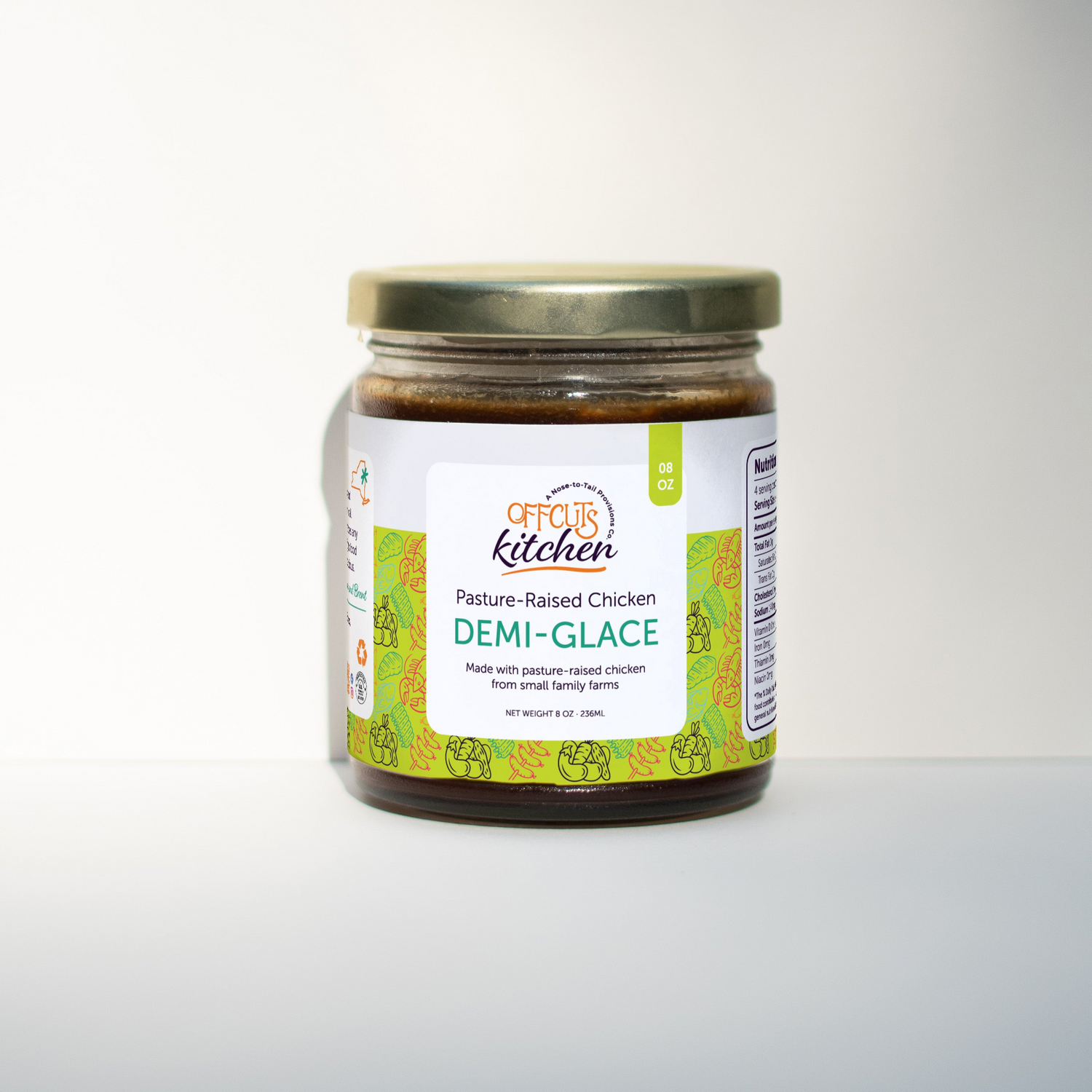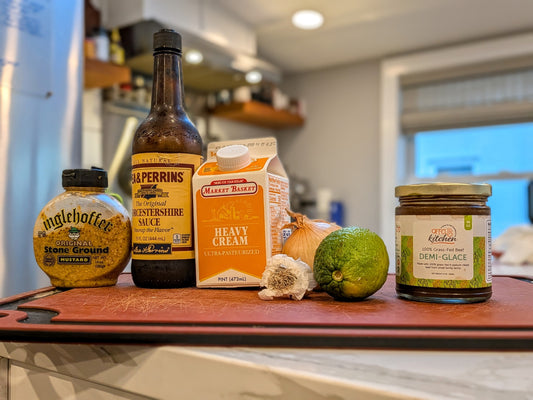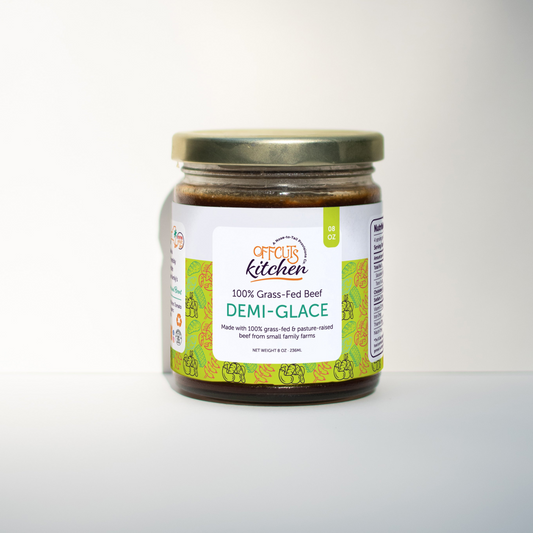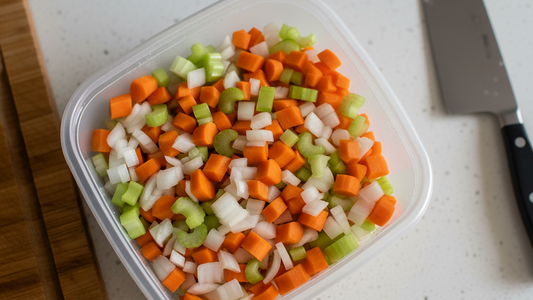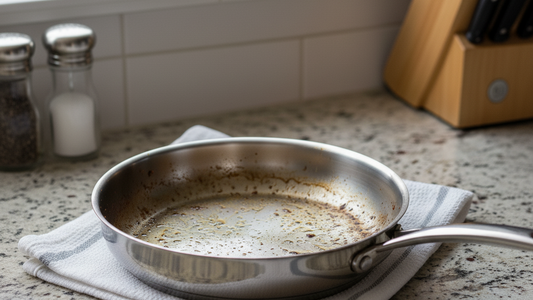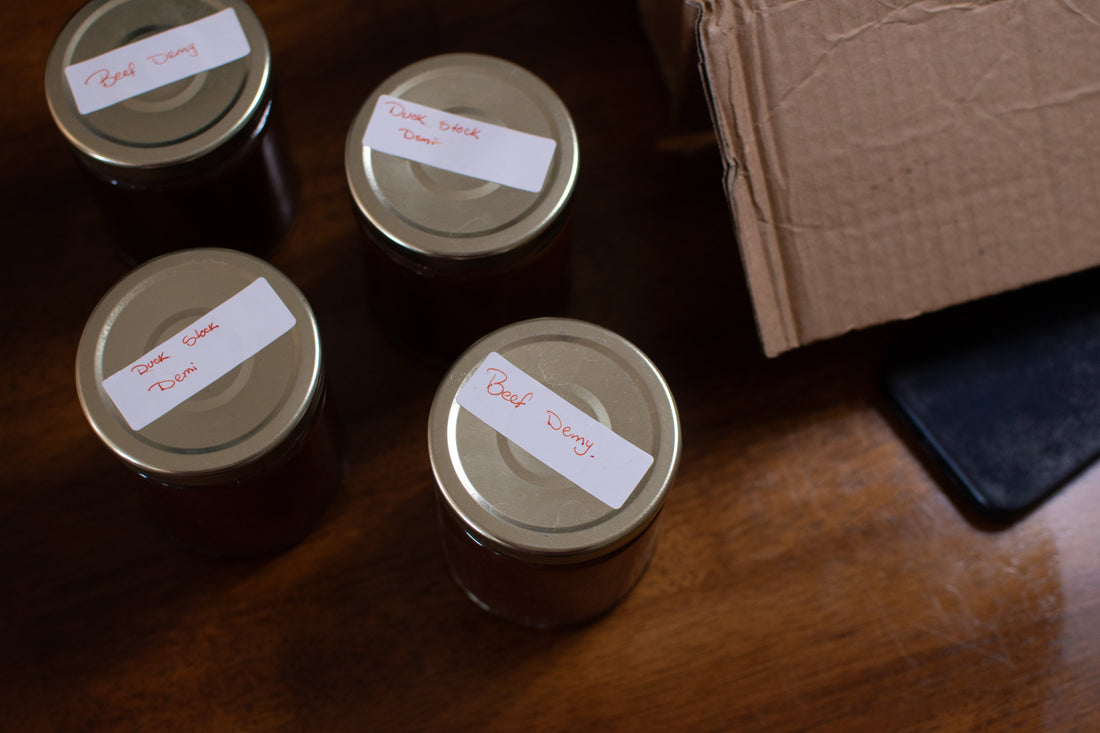
How Collagen from Bone Broth Supports Joint and Skin Health
Share
Although collagen has been long used to provide body to liquids when cooking, it has recently flown to popularity due to its benefits for skin and joint health. Luckily, this is one of those rare situations where the thing that tastes wonderful is actually wonderful for you. Collagen’s ability to create connective tissue is fantastic for maintaining joint cartilage, as well as great for your skin. Due to damaged cartilage in my thumb, I try to keep a high level of collagen in my diet, and while I’m partial to making bone broth for my collagen, supplements can be useful as well.
No matter how you consume collagen, we wanted to put a quick look together at how it works and what kind of impact it can have!
What is collagen?
Collagen is the most abundant protein in our bodies. Its fibre‑like structure creates connective tissues that make up our bones, skin, muscles, tendons and cartilage. As we age, collagen production declines and environmental factors like sun exposure, smoking and stress further damage collagen fibers[1]. This decline contributes to signs of ageing in the skin and loss of elasticity in our joints.
In foods, collagen is found only in animal tissues that contain connective tissue. When we simmer bones for a long time, as we do with bone broth, the collagen breaks down into gelatin and releases amino acids such as proline and glycine[3]. These amino acids are building blocks for our own connective tissues.
What makes bone broth special?
Bone broth is more than a trendy beverage. When prepared properly, simmered for at least six hours, and often 24 or more; it pulls nutrients out of the bones and connective tissues[2]. A quality broth will set into a gel when chilled, indicating the presence of collagen and amino acids. Just pop one of our Roasted Chicken Demi-Glaces in the fridge and see this solidification in action. It also contains minerals such as calcium, potassium, sodium and magnesium.
Registered dietitians from the Cleveland Clinic note that collagen in bone broth can help reduce joint pain by protecting tendons and ligaments. Collagen is a major component of our bones and muscles, and a decline in collagen increases the risk of conditions like osteoporosis. Bone broth provides amino acids that are easily absorbed and can help build tissues, muscles and bones. It’s also low in calories, roughly 50 calories per cup, while offering around 9 g of protein.
Collagen and joint health
Joint discomfort often arises when cartilage, the cushioning tissue between bones, wears down. Collagen makes up about 60 % of cartilage[1]. When we consume collagen, our bodies break it down into amino acids that are used to repair and maintain connective tissues[3]. A boost of collagen can help reduce joint pain by supporting tendons and ligaments[2].
It’s important to keep expectations realistic. Studies showing improvements in joint pain often use collagen supplements with higher concentrations than you’d get from a cup or two of bone broth[3]. That said, bone broth is a gentle way to add these amino acids to your diet, especially when you’re already cooking soups, stews or sauces.
How to incorporate broth for joint support
- Sip a warm mug of broth on its own as part of your evening routine.
- Use bone broth as the base for soups, stews and grains.
- Add a splash of broth to sautéed vegetables or grains during cooking.
- Blend chilled broth cubes into morning smoothies for a savoury boost.
Collagen and skin health
Collagen’s role in skin is similar to its role in joints: it provides structure and elasticity[1]. As we age and collagen declines, skin becomes thinner and less resilient, leading to wrinkles. Some clinical trials have found that collagen supplements improve skin elasticity and hydration, but the research is limited and often funded by supplement companies.
Bone broth offers collagen in its natural context, accompanied by amino acids and minerals. The Cleveland Clinic notes that bone broth’s amino acid glycine may help reduce stress and improve sleep[2], which indirectly supports skin health. However, there isn’t strong evidence yet that drinking bone broth alone will dramatically improve your skin. Think of it as one part of a nutrient‑rich diet that includes plenty of vitamin C‑rich fruits and vegetables; vitamin C is essential for our bodies to produce collagen[1].
Tips for boosting skin health naturally
- Pair bone broth with vitamin C‑rich foods like bell peppers, kale or citrus.
- Include healthy fats (olive oil, avocado) and antioxidants (berries, leafy greens) to support skin hydration.
- Stay hydrated; collagen fibres need water to maintain structure.
Food vs. supplements: what’s best?
There is growing interest in collagen powders and pills. While some studies report benefits, most research is small and industry‑funded[1]. Supplements may contain varying levels of collagen. Bone broth offers a whole‑food alternative with minerals and electrolytes that supplements lack[2]. If you enjoy making broth or incorporating it into meals, it’s a simple way to support your collagen intake without relying on expensive supplements. I tend to keep both a collagen supplement powder and bone broth around the house.
How to make or choose a high‑quality broth
For our customers who like to DIY, making broth is straightforward. Combine bones (beef, chicken, turkey or fish), a splash of vinegar to help pull collagen from the bones[2], aromatic vegetables and herbs. Simmer for six to 24 hours, strain and cool. The gelled texture when cold signals high collagen. You can freeze broth in portions for convenience.
If you’re buying bone broth, look for transparency around ingredients and cooking time. High‑quality broth should be cooked for several hours and turn gelatinous when chilled. At Offcuts Kitchen, we simmer our broths long enough to extract collagen and nutrients and only use bones from grass‑fed, pasture‑raised animals.
The bottom line
Bone broth is not a miracle cure, but it is a nutrient‑dense food that provides collagen, amino acids and minerals. These nutrients may support joint comfort, skin elasticity and overall wellness when part of a balanced diet[2][1]. As we continue to honour the whole animal and reduce waste, bone broth remains one of the most delicious and sustainable ways to nourish ourselves and our families.
Ready to explore more? Check out our guides on the differences between stock, broth and gravy, learn how umami works, or browse our recipe for making demi‑glace at home for deeper flavour.
